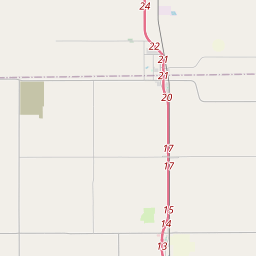Pearce Chapel-Strip Cemetery
Historical marker location:






The only landmark of the Strip Community, named for its location on a 1.5 by 15-mile strip of land opened to homesteaders in the 1890s. William Houston Pearce (1844-1926) moved into the area in 1895 and started a school, called "Round-Top", or "Strip". Small groups began to worship in the schoolhouse, and one congregation formed Pearce Chapel Methodist Church. F. E. Andrews (1857-1898) gave a cemetery tract in 1898, and late that year his was the first grave. Strip Post Office opened in 1904 with Postmaster Jerry W. Turner handling the mail in his home. In 1906, a Union Church was built near the cemetery site, which was purchased by public subscription in 1907, in order to clear the title. In 1910 the Strip Post Office closed after service was made available in Abernathy. The school and church buildings were moved to Lakeview in succeeding years, but this cemetery continues to be used. By 1973 it had 180 graves. War veterans buried here include two Confederate soldiers, James E. Fitzgerald and William Houston Pearce; World War I veterans George W. Fitzgerald, George Harkness, and Leroy Mahagan; World War II veterans Thomas L. Goldston, Harvey Shelby Pittman, and John Fred Sherman.
1974
As one of the most visible programs of the Texas Historical Commission (THC), historical markers commemorate diverse topics in Texas history, including: the history and architecture of houses, commercial and public buildings, religious congregations, and military sites; events that changed the course of local and state history; and individuals who have made lasting contributions to the state, community organizations, and businesses.
In the late 19th century, Texas became known for its cattle drives, in which cowboys would move herds of cattle from Texas to railheads in Kansas and other northern states. The cattle drives were dangerous and difficult work, but they played a key role in the development of the American cattle industry.
The county was officially organized in 1888 and named after Lt. John C. Hale, a hero of the Battle of San Jacinto during the Texas Revolution. Agriculture played a crucial role in the early development of Hale County, with farming and ranching becoming the primary economic activities. The arrival of the railroad in the late 19th century further facilitated trade and growth in the region.
One significant event in Hale County's history was the discovery of oil in the early 20th century. Oil fields were found near the city of Plainview, leading to an economic boom and population growth. The discovery of oil allowed for the establishment of refineries and related industries, transforming Hale County into an important oil-producing area in Texas.
In recent decades, the economy of Hale County has diversified, with the advent of new industries such as healthcare, manufacturing, and education. The county continues to be a major agricultural producer, specializing in cotton, sorghum, and cattle ranching. Hale County is also known for its strong community spirit and has maintained its rural charm while embracing progress and modernization.
Hale County Timeline
This timeline provides a glimpse into the major events and milestones that have shaped the history of Hale County, Texas.
- 1876: Hale County is founded as a part of the Texas Panhandle.
- 1881: The first permanent settlement, Plainview, is established.
- 1888: The Santa Fe Railroad reaches Plainview, boosting the town's growth.
- 1891: Hale County is officially organized.
- 1892: The first courthouse is constructed in Plainview.
- 1907: The Discovery Oil Well is drilled, leading to an oil boom in the county.
- 1920: The town of Hale Center is incorporated.
- 1930s: The Great Depression hits Hale County, causing significant economic hardship.
- 1941: United States enters World War II, causing Hale County to experience an increase in agricultural production.
- 1950s: The introduction of irrigation systems revolutionizes agriculture in the county.
- 1980: Hale County experiences an economic downturn due to a decline in the oil industry.
- 1990s: The establishment of wind farms begins to diversify the county's energy sources.
- 2008: Hale County suffers from a severe drought, affecting agricultural production.
- 2010s: Renewed focus on economic development and tourism to boost the county's economy.